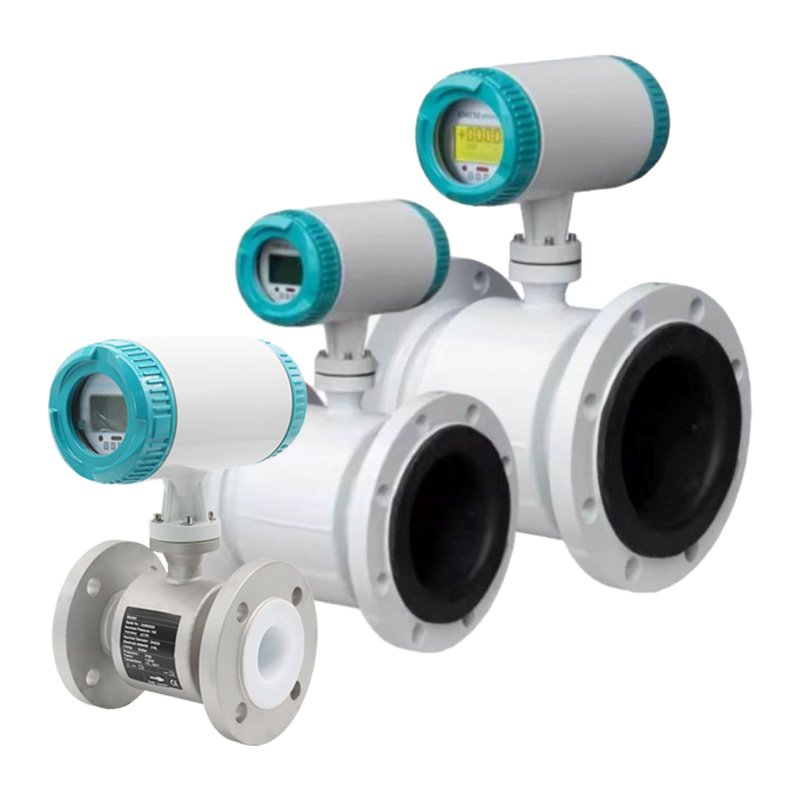Selecting the right electromagnetic flow meter for wastewater treatment requires careful consideration of several key factors to ensure that it can meet the needs of specific application scenarios. The following is a detailed analysis and supplement to these factors:
Measurement accuracy
The accuracy of electromagnetic flow meters is diverse, generally within the range of ±0.2%, ±0.3%, ±0.5%, ±1.0% and ±2.5% (not full tube). The choice of accuracy level should be based on actual needs: high-precision flow meters can provide more accurate measurement results, but correspondingly, their price will be higher. In order to avoid accuracy reduction or flow meter blockage, it is necessary to set the range reasonably, which is neither large nor small.
Fluid medium
Electromagnetic flow meter is suitable for measuring conductive liquid, the conductivity of the measured medium needs to be higher than a certain threshold, otherwise it may lead to measurement error or even flow meter failure. In the selection, the appropriate electrode material and lining material should be selected according to the sewage composition. For example, domestic sewage can use rubber liners and 316L electrodes, while industrial sewage is more suitable for teflon liners and corrosion resistant electrodes.
Flow rate and flow range
The flow rate range of the electromagnetic flow meter needs to be determined according to the actual application scenario. It is generally recommended to use in the economic flow rate range to avoid excessive flow rate resulting in flow meter wear or low flow rate resulting in inaccurate measurement. Choosing the right flow meter range is crucial to ensure accurate operation of the flow meter within the measuring range.
Installation condition
Factors such as the installation position of the flow meter, pipe diameter, pipe length, and fluid flow direction should be taken into account. The correct installation position can ensure that the flow meter can work properly, and the pipe diameter and length will affect the measurement effect of the flow meter. The flow direction of the fluid should also be consistent with the design direction of the flow meter to avoid measurement errors. For large diameter pipes, plug-in electromagnetic flow meters are a good choice, and their installation and maintenance are relatively simple.
After-sales service
It is important to choose a manufacturer with good after-sales service. Good after-sales service means that in the process of using the flow meter, users can get timely technical support and maintenance services. This can not only improve the service life of the flow meter, but also reduce the user’s operation and maintenance costs.
Other considerations
- Environmental adaptability: Consider the adaptability and stability of the flow meter in complex environments, such as temperature, humidity, pressure and other factors on the performance of the flow meter.
- Cost-effectiveness: When selecting the electromagnetic flow meter, it is necessary to consider factors such as price, performance and service life to achieve maximum cost-effectiveness.
- Intelligent and remote monitoring: With the development of technology, more and more electromagnetic flow meters have intelligent and remote monitoring functions. These functions can improve measurement accuracy and efficiency, and reduce operation and maintenance costs.
To sum up, the selection of an electromagnetic flow meter suitable for sewage treatment requires comprehensive consideration of measurement accuracy, fluid medium, flow rate and flow range, installation conditions, after-sales service and other relevant factors. By comprehensively evaluating these factors, you can ensure that the selected flow meter can meet the needs of wastewater treatment, improve measurement accuracy and efficiency, and reduce operation and maintenance costs.
If you want to know more about the flow meter or flow meter selection, please consult the Aister flow meter manufacturer email: sales@aistermeter.com for help.

